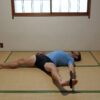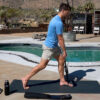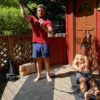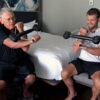Are you searching for a fun, challenging workout that requires little to no equipment saving you money and time? Let us show you the power you already have with 8 Effective Isometric Exercises: No Equipment Needed to Achieve Amazing Results.
Isometric exercise is a simple and easy way to build strength, endurance, and healthy muscles. Isometric exercises occur when your muscle is activating or firing but not shortening or lengthening during contraction. Isometrics engage more muscle fibers and are scientifically proven to be effective and build strength up to 66% faster than lifting weights.
Safe and Effective Isometric Exercises No Equipment Needed
Isometric strength training techniques require little to no movement of your joints. Many doctors and physical therapists encourage isometric strength training for the exceptional development it has for strengthening tendons and ligaments.
Therefore, doctors and physical therapists emphasize isometric strength training as part of their patients’ rehabilitation programs. Little joint movement creates a safer exercise to help muscles build without re-injury. In addition, the minimal joint movement helps people with arthritis perform effective exercises for strength training with minimal pain unlike lifting weights which can exacerbate joint pain.
There are many more benefits of isometric strength training, but in this article, discover 8 of our favorite isometric exercises for an amazing workout. These exercises require zero equipment that you can perform in the gym, at home, at work, or on the road to progress toward your fitness goals. Integrate isometrics into your routine or perform them together as a circuit for a total-body workout.
At Bullworker, we find using 7-10 second isometric holds using 60%-80% of your maximum effort is optimal for isometric exercises. This type of contraction allows you to rapidly increase strength while maintaining a safe exercise protocol.
A few tips before you get started:
1. Focus on your form and ensure the proper muscles are engaging.
2. Breathe consistently, never hold your breath.
3. Once you master the isometric hold, you can add resistance with Bullworker products or weights for more of a challenge
4. Start out with a 7 – 10 second hold. Longer holds can be performed for more advanced training but this can be very taxing on your body.
1. Isometric Lunge
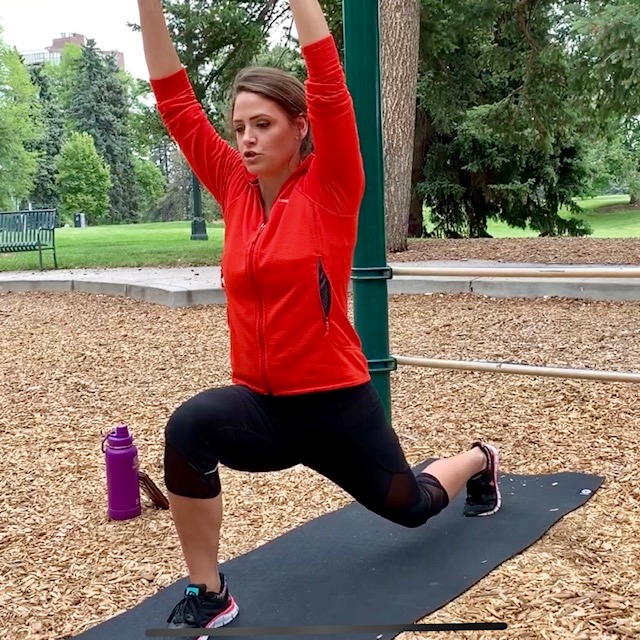
Lunges are a fantastic exercise for building your leg and glute muscles (quadriceps, hamstrings, and butt) while actively lengthening and stretching your torso and opposite leg and hips. You do not need any weight in order to feel the burn of this isometric exercise. Simply focus on contracting your muscles and imagine sliding your front foot back and your back foot front (without movement of course) to engage your muscles even more.
How to Perform the Lunge
- Stand up tall
- Take a large step forward
- Bend your knees and lower your body until your knees are bent to 90 degrees
- Hold the position for 7 – 10 seconds or until you are fatigued
- Repeat with another leg
- Repeat effective isometric exercises with no equipment between 1 – 5 sets (depending on your fitness level) to achieve amazing results with isometric strength training
2. Isometric Squat
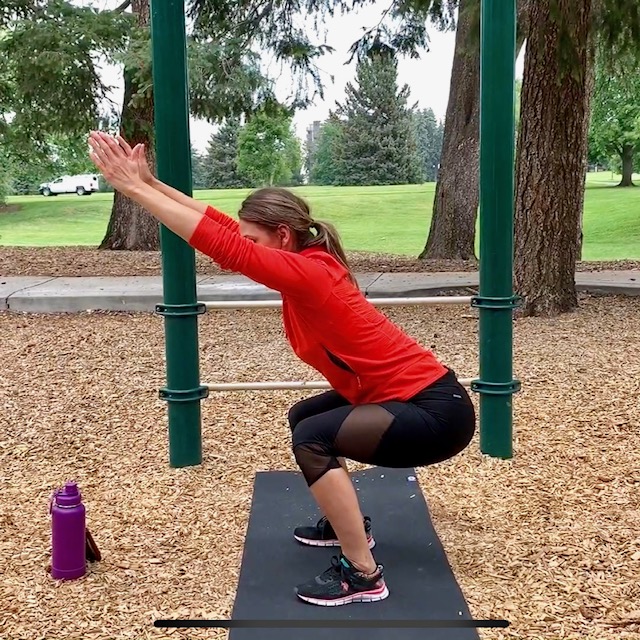
Squats are another effective exercise to help strengthen your leg and glute muscles (quadriceps, hamstrings, and butt). Keeping your core squeezed tight will allow you to get the full benefit of this isometric exercise. Focus on actively flexing your muscles.
How to perform the squat
- Stand with your feet shoulder-width apart
- raise your hands in front of your chest or overhead
- Push your hips back and keep your back straight
- Bend your knees until your thighs are nearly parallel to the ground or lower (depending on your body comfort)
- Ensure your knees stay behind your toes (if you were to draw a line down from your knees to your toes)
- Hold the position for 7 – 10 seconds or until you are fatigued
- Repeat effective isometric exercises with no equipment between 1 – 5 sets (depending on your fitness level) to achieve amazing results with isometric strength training
3. Isometric Bridge

The bridge or hip thrust is a unique exercise that focuses on strengthening your glutes, hamstrings, and quadriceps while simultaneously giving your core and lower back a lengthening stretch and workout.
How to perform the bridge or hip thrust
- Lie on your back
- Bend your knees and place your feet on the floor at least 1 foot from your butt
- Squeeze or engage your core
- Press into your heels and balls of your feet and squeeze your glutes to lift your hips toward the ceiling
- Maintain space between your chin and chest
- Keep your upper back/shoulders on the ground
- Hold the position for 7 – 10 seconds or until you are fatigued
- Repeat effective isometric exercises with no equipment between 1 – 5 sets (depending on your fitness level) to achieve amazing results with isometric strength training
4. Side Plank

The side plank focuses on engaging your core and oblique muscles, but also acts as a full-body workout that also strengthens your glutes and other stability muscles. Balance is key to performing this exercise safely and correctly.
How to perform the side plank
- Lie on your side
- Place your legs straight and stacked on top of one another
- Lift your hips up as high as you can (make sure your weight is resting on your right forearm or hand and the outside edge of your bottom foot)
- Ensure elbow is directly beneath your shoulder
- Hold the position for 7 – 10 seconds or until you are fatigued
- Repeat with another side
- Repeat effective isometric exercises with no equipment between 1 – 5 sets (depending on your fitness level) to achieve amazing results with isometric strength training
5. Wall Sit

Similar to the squat, wall sits help strengthen your leg and glute muscles (quadriceps, hamstrings, and butt). Keep your core squeezed tight and posture straight to help tremendously with proper form.
How to perform the wall sit
- Stand with your back against a wall
- Step your feet forward about two feet (between hip and shoulder-width apart)
- Keep your head and back against the wall
- Squat down to the intended depth (parallel or lower if you can)
- Hold for 7 – 10 seconds or until you are fatigued
- Push through your heels and return to the starting position
- Repeat effective isometric exercises with no equipment between 1 – 5 sets (depending on your fitness level) to achieve amazing results with isometric strength training
6. Hanging Leg Raises, No Equipment, Leg Raises

Hanging leg raise holds require core, back and shoulder strength, stability and body control for success. This isometric exercise truly pushes your abs and core to its limits.
How to perform hanging leg raise
- Hang from a bar or secure anchor point
- Lift your legs, so they are parallel to the ground
- Squeeze your core to straighten your back as vertical as it can be (no arch).
- Hold for 7 – 10 seconds or until you are fatigued
- Repeat effective isometric exercises with no equipment between 1 – 5 sets (depending on your fitness level) to achieve amazing results with isometric strength training
How to perform leg raises
- Lie flat on your back
- Lift your legs 12 – 20 inches off the ground
- Squeeze your core
- Hold for 7 – 10 seconds or until you are fatigued
- Repeat effective isometric exercises between 1 – 5 sets (depending on your fitness level) to achieve amazing results with isometric strength training
7. High Plank
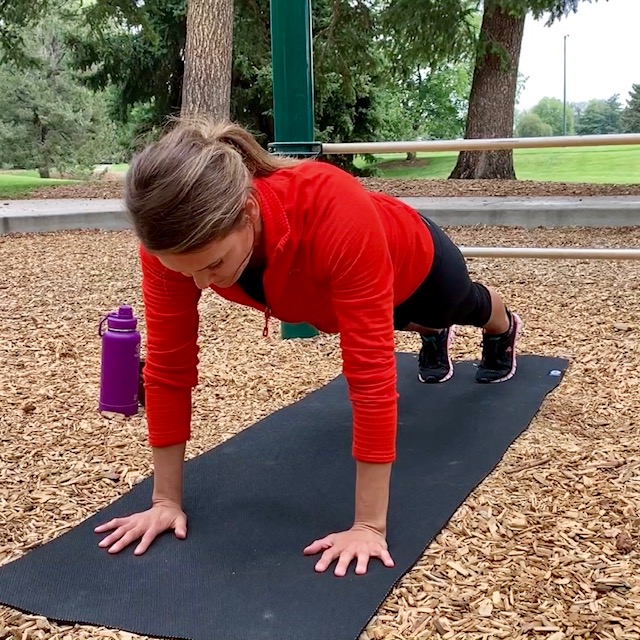
- High plank holds are similar to standard pushups, but you are holding the top position.
- How to perform the High Plank
- Place your hands directly under your shoulders or slightly wider than shoulder length
- Extend your legs behind you to a supportive and comfortable position (form a straight line from head to heels)
- Keep your shoulders pulled back away from your ears
- Squeeze your core
- Raise your body until your arms are straight but not locked at the elbow
- Hold for 7 – 10 seconds or until you are fatigued
- Repeat effective isometric exercises with no equipment between 1 – 5 sets (depending on your fitness level) to achieve amazing results with isometric strength training
8. Prayer Pose

The prayer pose actively strengthens your chest, core, and shoulders.
How to perform the prayer pose
- Press your hands together in front of your chest
- Keep your elbows and forearms parallel to the ground
- Squeeze actively engage your chest, core, and shoulders
- Hold for 7 – 10 seconds or until fatigued
- Repeat effective isometric exercises with no equipment between 1 – 5 sets (depending on your fitness level) to achieve amazing results with isometric strength training
8 Effective Isometric Exercises: No Equipment Needed Conclusion
Equipment, knowledge, and effort can be challenging to make the commitment to start a workout routine. That is where the beauty of isometrics comes in. Isometrics are a simple, free, and fun opportunity for you to work towards habits suitable for you. Isometric exercises make it easier to get started in a healthy routine because all you need is your body and a positive attitude.
We hope these isometric exercises get you started on a routine that works for you. You can pair these isometrics with Bullworker products for a more challenging workout. You can also use Bullworker total gym fitness equipment for simple, strenuous isometric workouts that will help you achieve amazing results.
If you enjoyed this article, please share it with your friends and family and comment your thoughts below.
